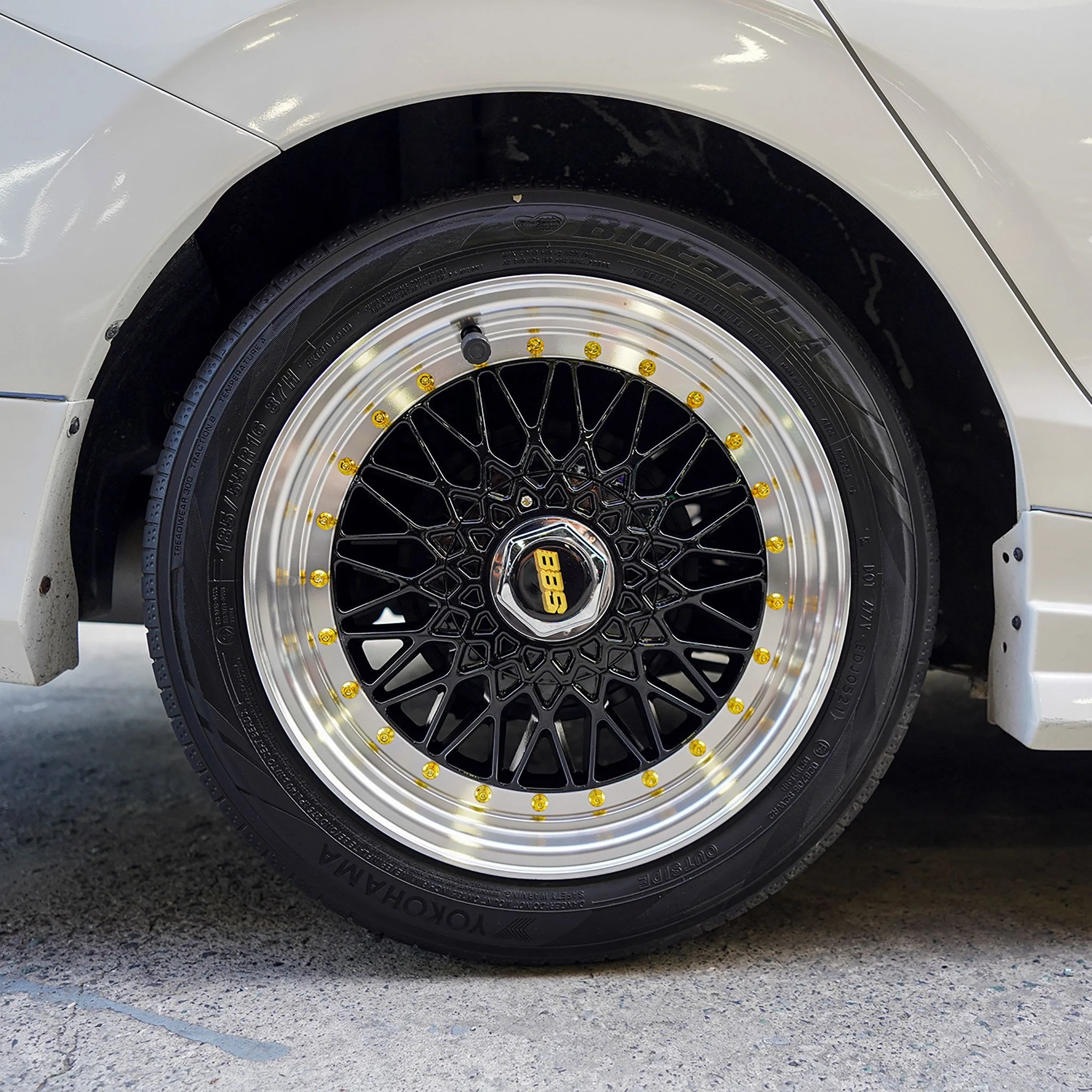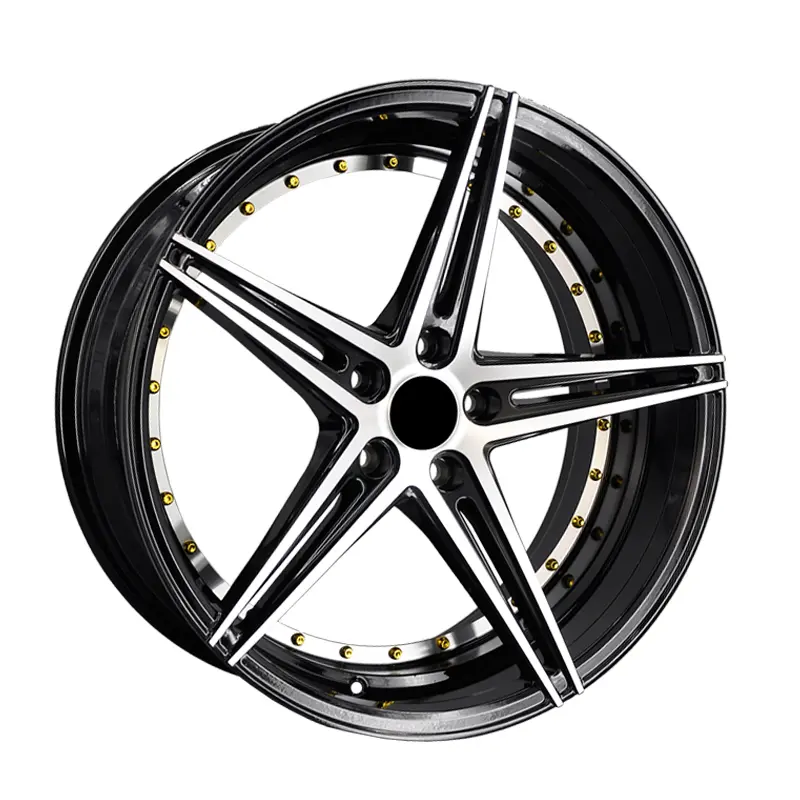


When it comes to choosing the right set of wheels for your vehicle, the size plays a crucial role in various aspects. Two of the most common wheel sizes found on modern vehicles are 16 and 17 inches, each offering its own set of advantages and trade-offs. In this comprehensive guide, we'll explore the key differences between these two wheel sizes to help you make an informed decision.

Wheel size is an essential consideration when it comes to a vehicle's overall performance, comfort, and aesthetics. The choice between 16-inch and 17-inch wheels can significantly impact various factors. This article will delve into the pros and cons of each wheel size, providing valuable insights to help you make an informed decision based on your driving needs and preferences.
One of the primary reasons drivers opt for larger wheels is their enhanced visual appeal. Here's a comparison of the visual impact:
| 17-inch Wheels | 16-inch Wheels |
|---|---|
| Give vehicles a more aggressive and sporty look | Offer a more understated and subtle appearance |
| Fill out the wheel wells and complement the overall design | Provide a clean and elegant look |
| Create a more muscular stance, making the vehicle appear more powerful and dynamic | May not command the same level of attention as larger wheels |
The size of the wheels and the corresponding tire sidewall height can significantly affect ride quality and comfort levels.
16-inch wheels typically come with tires that have taller sidewalls, acting as cushions against road imperfections, potholes, and bumps. This results in a smoother and more comfortable ride, as well as reduced road noise for a quieter cabin experience.
17-inch wheels often come with lower-profile tires, which have shorter sidewalls. While this can improve handling and steering response, it can also lead to a firmer, less forgiving ride, and increased road noise.
The taller sidewalls on 16-inch tires provide better cushioning against road imperfections, such as potholes and bumps. This can be particularly beneficial for those who frequently drive on poorly maintained roads or in areas with harsh weather conditions.
The shorter sidewalls on 17-inch tires offer less cushioning, which can result in a more jarring experience when encountering road imperfections.
When it comes to handling and performance, 17-inch wheels with their lower-profile tires can offer several advantages.
| Aspect | 17-inch Wheels | 16-inch Wheels |
|---|---|---|
| Steering Responsiveness | Shorter sidewalls provide better lateral stiffness, translating to improved steering precision and responsiveness | - |
| Cornering Ability | Wider contact patch enhances grip and cornering ability | - |
| Driving Dynamics | Contribute to a sportier and more dynamic driving experience | - |
While the difference is relatively small, 16-inch wheels generally have a slight advantage in terms of fuel efficiency compared to their 17-inch counterparts.
Rotational Mass: Smaller wheels and tires are typically lighter, reducing the overall rotational mass and strain on the engine, resulting in improved fuel economy.
Rolling Resistance: The taller sidewalls of 16-inch tires tend to have lower rolling resistance, meaning less energy is lost due to tire deformation, contributing to better fuel efficiency.
Another factor to consider is the cost of wheels and tires.
Wheel and Tire Prices: Generally, 16-inch wheels and tires are more affordable than their 17-inch counterparts.
Replacement Frequency: The potential for longer tire life with 16-inch wheels can contribute to lower overall ownership costs. The taller sidewalls on 16-inch tires are generally more durable and resistant to damage from road hazards, potentially extending their lifespan compared to the shorter sidewalls on 17-inch tires.

It's crucial to ensure that the wheel size you choose is compatible with your vehicle.
OEM Fitment: Most manufacturers offer a range of wheel sizes as original equipment (OEM) or as optional upgrades. Consulting your owner's manual or contacting the manufacturer can help you determine the appropriate wheel sizes for your specific vehicle model.
Aftermarket Options: The aftermarket offers a wide variety of wheel and tire combinations, allowing you to customize your vehicle's appearance and performance. However, it's essential to ensure that any aftermarket wheels and tires are properly sized and rated for your vehicle to maintain safety and optimal performance.
Choosing between 16-inch and 17-inch wheels involves weighing various factors, including:
Appearance
Ride quality
Handling
Fuel efficiency
Cost
While 17-inch wheels can provide a sportier look and enhanced handling capabilities, they may compromise ride comfort and fuel economy. Conversely, 16-inch wheels offer a smoother ride, better fuel efficiency, and a more affordable option, but may not provide the desired aggressive appearance or precise handling characteristics.
Ultimately, the decision should be based on your personal preferences, driving style, and priorities. If ride comfort and fuel efficiency are your top concerns, 16-inch wheels may be the better option. However, if you value sportier handling and a more aggressive look, 17-inch wheels could be the way to go. It's essential to carefully consider your specific needs and driving conditions before making a decision that aligns with your preferences and requirements.
Smaller 16-inch wheels are typically lighter, reducing the overall rotational mass and strain on the engine, resulting in slightly better acceleration compared to heavier 17-inch wheels.
No, wheel size does not directly impact braking performance. Braking is primarily determined by factors such as brake pad compound, rotor size, and the vehicle's overall weight distribution.
Yes, changing the wheel size from the factory specification can affect the speedometer's accuracy, as it relies on the correct tire circumference for accurate speed readings.
Generally, 17-inch wheels with wider tires can provide better traction and grip due to the increased contact patch with the road surface.
The overall tire diameter, width, and wheel offset (backspacing) have a more significant impact on the turning radius than the wheel size alone.
Yes, larger wheels can slightly reduce the vehicle's ground clearance, which may be a concern for those who frequently drive on rough terrain or encounter high curbs.
16-inch wheels and tires are generally more widely available and offer a broader selection compared to 17-inch options, which may be more limited, especially for certain vehicle models.
Yes, the wheel size and corresponding tire sidewall height can affect the suspension's ability to absorb road imperfections, with taller sidewalls on 16-inch tires providing better cushioning and a smoother ride.
Generally, 16-inch wheels and tires are more affordable to replace, potentially resulting in lower maintenance costs over the vehicle's lifetime.
Yes, larger 17-inch wheels with lower-profile tires can provide better handling and stability due to the reduced sidewall flex and increased lateral stiffness.

Sarah isn't your average gearhead. With a double major in Mechanical Engineering and Automotive Technology, she dived straight into the world of car repair. After 15 years of turning wrenches at dealerships and independent shops, Sarah joined MICDOT to share her expertise and passion for making cars run like new. Her in-depth knowledge and knack for explaining complex issues in simple terms make her a valuable asset to our team.









